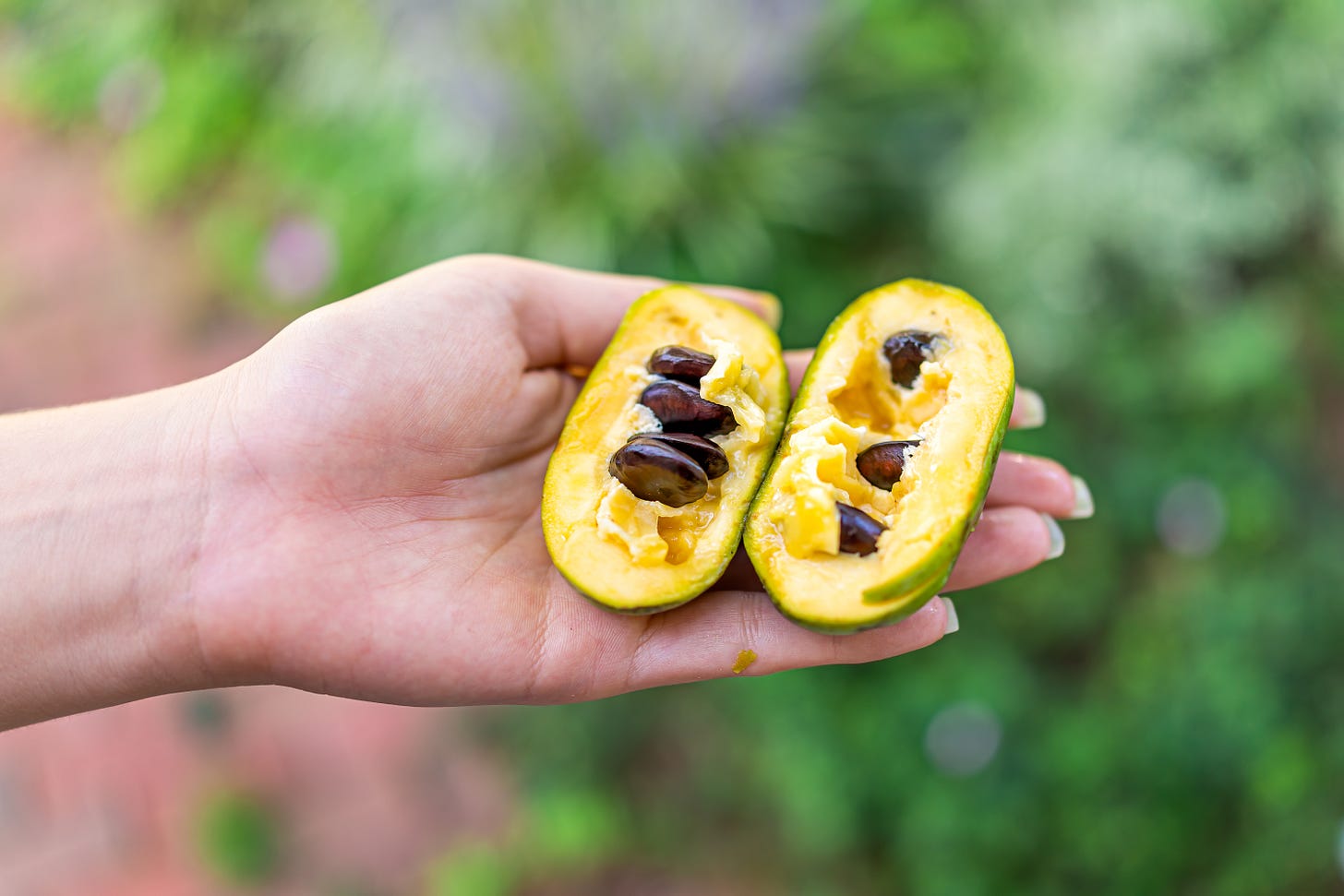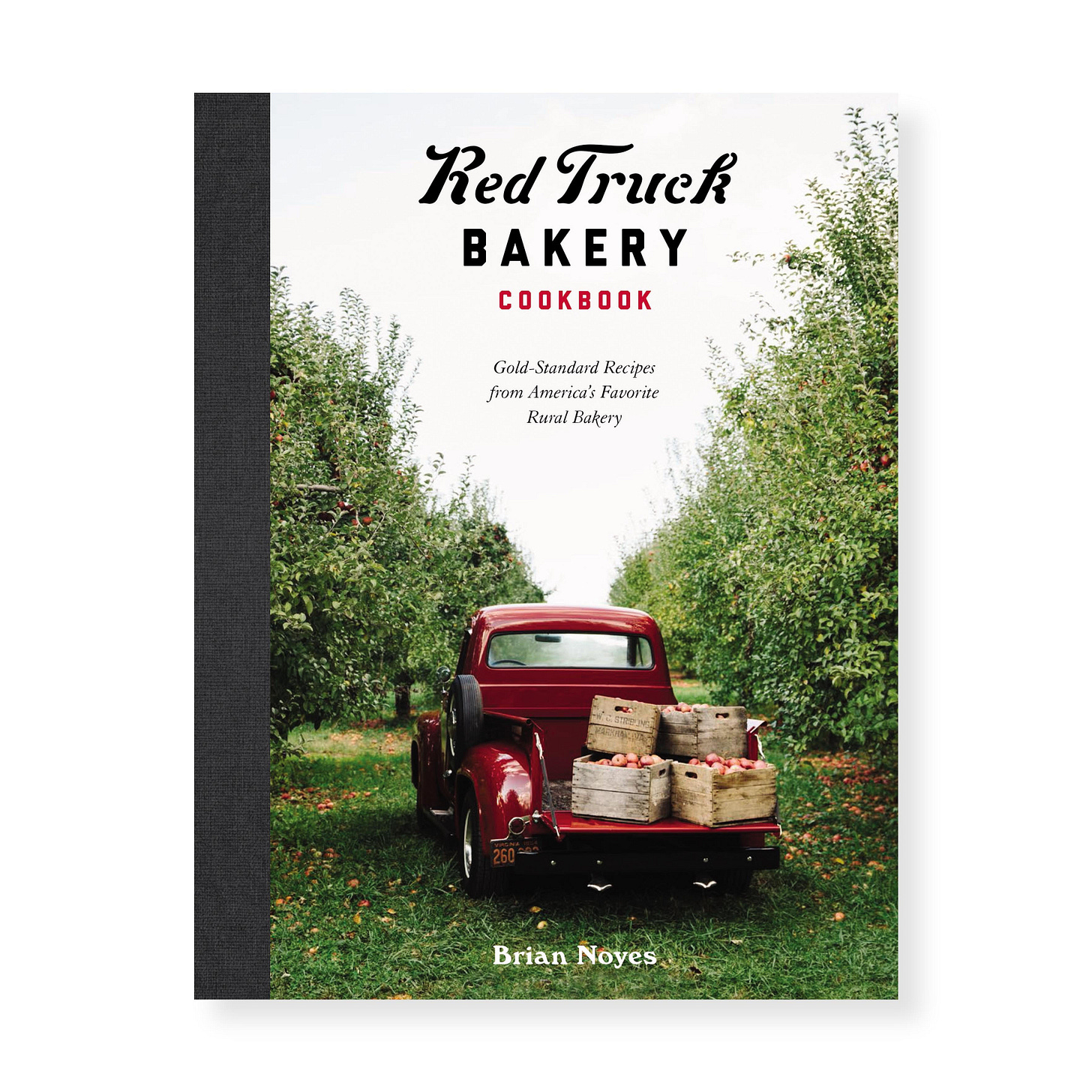Recipe: Pawpaw chess pie
A recipe from The Red Truck Bakery Cookbook, and an invitation to dream of a backyard pie
This is the second of three recipes that follows my post on how we might reimagine pie for the climate era.
They say there’s nothing more American than apple pie, but I’m not sure I’m convinced. That honor might more logically go to a pawpaw pie, a serviceberry pie, a huckleberry pie, or any other pie made with one of the many native, edible fruits that grow across this continent.
Agrobiodiversity is nature’s insurance policy against climate change and disease, and our industrial food system has done an impressive job of squashing it. So dream with me for a moment about a very specific and sweet form of un-squashing: What if our dessert course pushed back against fruit monotony? What if pie dough was a canvas, not for the same-old, but for the biodiversity we can find in our backyards?
The following recipe for pawpaw chess pie, kindly shared with us by Brian Noyes at The Red Truck Bakery in Virginia, is one such sweet example. Pawpaws look like mini mangoes and have a tropical taste that in recent years has created fierce devotion and a smidge of possessive jockeying. (Is it the “Michigan banana,” the “West Virginia banana,” or the “Appalachian banana?”) A key part of some Indigenous communities’ diets before colonization, today pawpaws can be foraged along creeks and rivers up and down the east coast and found at some farmers markets beginning in late summer.
If you’re outside the pawpaw zone, no sweat. Let this pie be your invitation to dream of your own backyard pie. What wild and native fruit from your area could star in a summertime slice?
Recipe: Pawpaw Chess Pie
Reprinted with permission from The Red Truck Bakery Cookbook. Shoutout to Brian Noyes for sharing it.
Brian’s recipe headnote: I enjoy resurrecting antique Appalachian ingredients that have fallen out of favor over the years. Pawpaws are a native wild fruit prevalent in the mid-Atlantic with a tropical-ish taste, something akin to bananas mixed with apples, pears, and a touch of mango. Our buddy Tarver King, a James Beard-nominated chef at the Restaurant at Patowmack Farm in Lovettsville, Virginia, loves foraging for offbeat ingredients, and he let me in on a few secret locations where pawpaws grow. You don’t need to go tramping through the woods to make this recipe, though; you can buy them at many farmer’s markets from early September through late October, or purchase frozen pawpaw puree online anytime.
Ingredients
Graham cracker crust
1 ½ cups graham cracker crumbs (12 graham crackers)
5 tablespoons unsalted butter, melted and cooled slightly
½ cup shredded coconut, toasted
¼ cup sugar
Pinch of kosher salt
Pinch of ground cinnamon
Filling
¾ cup sugar
¼ cup cornstarch
3 large egg yolks, lightly beaten
1 ½ cups buttermilk
½ cup heavy cream
1 cup pureed pawpaw pulp
Method
Make the crust: In a medium bowl, mix the graham cracker crumbs, melted butter, coconut, sugar, salt, and cinnamon until combined. Press evenly into the bottom and sides of a 10-inch pie pan. Chill for 1 hour.
Preheat the oven to 350F. Place a raised wire rack inside a rimmed baking sheet.
Make the filling: In a large saucepan, combine the sugar and cornstarch. Add the egg yolks, buttermilk, and cream. Stir to mix well, then add the pawpaw pulp. Cook over low heat, stirring continuously, for 8 to 10 minutes, until it has the consistency of thick applesauce. Remove the pan from the heat and let cool.
Pour the pawpaw mixture into the chilled crust to just below the edge of the pie pan. Carefully place the pie on the prepared baking sheet. Bake for 20 to 30 minutes, until slightly browned at the center–start checking at the 20-minute mark. Let cool completely before cutting.
Tip: Use a second pie pan to evenly press the graham cracker crust.
More about pawpaws & wild things
Follow Alexis Nikole Nelson (@blackforager) for foraging education and ideas, including a video on pawpaws
Read about how the pawpaw’s reputation has evolved over time (The Guardian), and how it’ll be affected by climate change (Grist)
If you’re in Ohio, live my dream and hit up the pawpaw festival in September
Learn about the apple’s backstory (it originated in Kyrgyzstan) in Eating to Extinction and scroll the many non-supermarket varieties that grow in the US
For more fruit inspo, get yourself a cookbook by indigenous chefs Sean Sherman or Freddie Bitsoie, who both have dessert recipes starring fruits native to the Americas
And if you really want to lean into the backyard pie bit, keep an eye out later this summer for Kate Lebo’s updated version of her cookbook Pie School, which promises new recipes with wild and rare fruits







